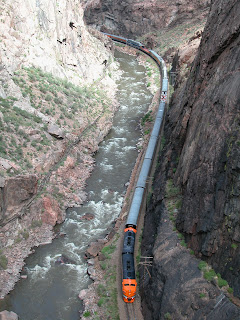
Glen Eyrie began as the estate of William Jackson Palmer, a railroad magnate and founder of the city of Colorado Springs. He built it about 4 miles north of the city, bordering Garden of the Gods. In 1867, he purchased 10,000 acres at $1.25 per acre to establish the colony later known as Colorado Springs. He later bought an additional 2,225 acres on which he built the estate. In 1909, he died as the result of a fall from his horse at the age of 72. At that time, the estate was valued at $3,000,000. His wife had passed, and his daughters were not in a position to take care of the estate. The girls offered the estate to the city of Colorado Springs at the time, but they refused because of the expense to maintain it. It was sold in 1916 to home developers. But it was the time of WWI, and sales were lacking. The property was purchased in 1938 as a summer home and cattle ranch. In 1950, it was again placed on the market for $500,000 and purchased in 1953 by The Navigators, a non-denominational Christian group that is the current owner. They use this as a retreat and conference center and international offices. To enter the grounds, you have to have a reservation for lodging.
Because of their mission to bring people closer to God, The Navigators have not placed TVs in rooms here, and they do not serve alcohol in the restaurants. The place is meticulously maintained, and the setting is gorgeous, being adjacent to Garden of the Gods. Hammocks and benches have been placed around the estate as places of quiet reflection. There are trails on the estate that were used by Palmer himself, and pathways to walk and enjoy the surroundings. In addition to the main castle (17 rooms), there are 6 other lodges, including the one where we stayed.
On the 3rd, we headed down to the castle for breakfast. It is served buffet style with lots of choices. My favorite was French toast with berry compote and walnuts. Soooooooooo good. When we arrived for breakfast, the patio was full, so we started inside in the dining room. After a bit, as people left, we were able to sit outside on the patio and enjoy the wonderful setting.
Since we could stay on the property until 5 pm, we decided to take one of the trails here. We discovered that he trails were not particularly well maintained, and the maps were sketchy at best. As a matter of fact, we agreed that the trail map was one of the worst we'd ever seen. There were some nice views from the trail, though.
After the hike, we descended to Glen Eyrie grounds, where we lazed in a hammock for maybe close to an hour before moving on.
Photos here: https://photos.app.goo.gl/MPjAEdEB6GPUqHvR6











